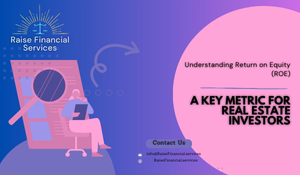As a professional bookkeeper specializing in real estate, one of the most important financial...
Key Financial Metrics Every Real Estate Investor Should Track
Unlock the secrets to successful real estate investing by mastering these essential financial metrics.
Importance of financial metrics in real estate investing.
Real estate investing can be a lucrative venture, but it requires careful analysis and diligent tracking of various financial metrics to ensure success. Understanding and monitoring these metrics helps investors make informed decisions, optimize property performance, and mitigate risks. By keeping an eye on key financial indicators, investors can better predict cash flows, assess property values, and secure favorable financing terms.
In this blog post, we will explore the essential financial metrics every real estate investor should track. These metrics provide a comprehensive picture of an investment's profitability, financial health, and potential for growth, enabling investors to achieve sustained success in the real estate market.

Cash Flow in Real Estate Investing: Track Net Cash Flow to Assess Property Profitability
Cash flow is the lifeblood of any real estate investment. It represents the net amount of cash generated by a property after all income and expenses have been accounted for. Positive cash flow indicates that a property is generating more income than it costs to operate, making it a profitable investment. Conversely, negative cash flow suggests that the property is costing more to maintain than it is earning.
Tracking net cash flow is crucial for assessing the ongoing profitability of a property. It helps investors identify potential issues early on and make necessary adjustments to improve performance. By maintaining a healthy cash flow, investors can ensure they have the resources needed to cover operating expenses, service debt, and reinvest in their properties.
Net Operating Income (NOI) in Real Estate: How NOI Helps Determine a Property's Income Potential
Net Operating Income (NOI) is a key metric used to evaluate a property's ability to generate income from its operations. It is calculated by subtracting operating expenses from gross rental income. Operating expenses include costs such as property management fees, maintenance, insurance, and property taxes but exclude debt service and capital expenditures.
NOI provides a clear picture of a property's operational efficiency and profitability before financing and tax considerations. By analyzing NOI, investors can compare the performance of different properties and identify opportunities for cost reduction and revenue enhancement. A higher NOI indicates a more profitable and efficiently managed property, making it an attractive investment option.
Capitalization Rate (Cap Rate) in Real Estate: Understanding Cap Rate to Evaluate Investment Potential
The capitalization rate, or cap rate, is a metric used to evaluate the potential return on investment for a real estate property. It is calculated by dividing the property's NOI by its current market value or purchase price. The cap rate provides an estimate of the property's expected rate of return, assuming no changes in income or expenses.
A higher cap rate indicates a higher potential return on investment, while a lower cap rate suggests a lower return. Investors use the cap rate to compare the profitability of different properties and to determine whether an investment aligns with their financial goals. Understanding the cap rate helps investors make informed decisions about which properties offer the best value and potential for growth.
Return on Investment (ROI) in Real Estate: Calculating ROI to Measure Overall Investment Success
Return on Investment (ROI) is a critical metric used to assess the overall success of a real estate investment. It measures the total return generated by an investment relative to its cost. ROI is calculated by dividing the net profit from the investment by the initial investment amount and expressing it as a percentage.
By calculating ROI, investors can evaluate the efficiency and profitability of their investment strategies. A higher ROI indicates a more successful investment, while a lower ROI may signal the need for adjustments or a reevaluation of the investment approach. Tracking ROI helps investors set realistic financial goals and measure progress toward achieving them.
Debt Service Coverage Ratio (DSCR) in Real Estate: Monitoring DSCR to Ensure Debt Obligations Are Met
The Debt Service Coverage Ratio (DSCR) is a vital metric that measures a property's ability to generate enough income to cover its debt obligations. It is calculated by dividing the property's NOI by its total debt service (principal and interest payments). A DSCR of 1.0 indicates that the property generates just enough income to cover its debt payments, while a DSCR greater than 1.0 suggests a comfortable margin.
Monitoring DSCR is essential for ensuring that a property can meet its debt obligations without financial strain. Lenders often use DSCR as a criterion for approving loans, and a higher DSCR can result in more favorable financing terms. Maintaining a healthy DSCR helps investors manage their leverage and reduce the risk of default.
Conclusion: Regularly Review These Real Estate Financial Metrics for Sustained Investment Growth
In conclusion, tracking key financial metrics is crucial for achieving sustained success in real estate investing. By regularly reviewing metrics such as cash flow, NOI, cap rate, ROI, and DSCR, investors can gain valuable insights into their properties' performance and make informed decisions to optimize their investments.



